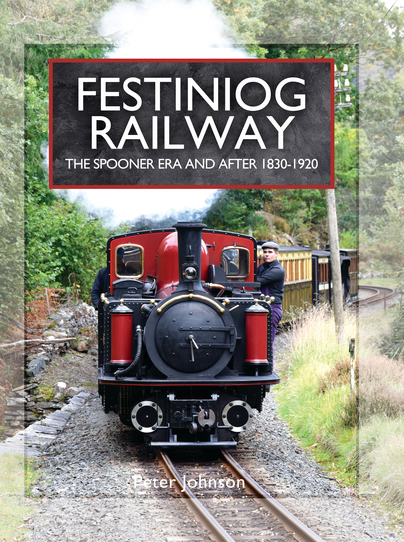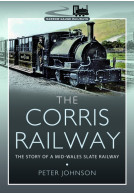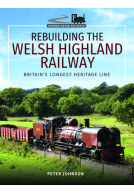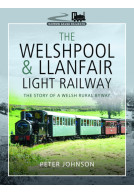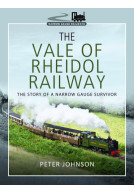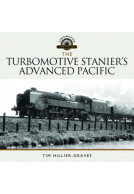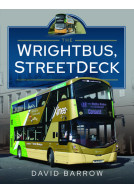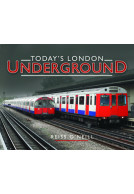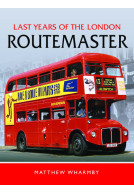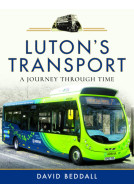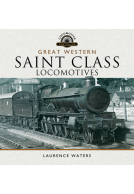Festiniog Railway (Hardback)
The Spooner Era and After 1830 - 1920
Imprint: Pen & Sword Transport
Pages: 208
Illustrations: 150
ISBN: 9781473827288
Published: 30th May 2017
Railway and Canal Historical Society
Runner-up for the Transport History Book of the Year award 2018.
(click here for international delivery rates)
Order within the next 5 hours, 45 minutes to get your order processed the next working day!
Need a currency converter? Check XE.com for live rates
| Other formats available - Buy the Hardback and get the eBook for free! | Price |
|---|---|
| Festiniog Railway eBook (41.6 MB) Add to Basket | £12.00 |
Festiniog Railway 1836-2014 describes the history of the worlds first steam-operated narrow gauge railway to carry passengers. It covers the history of the railway from its beginnings as a horse-worked tramroad in 1836, through its technical developments with the introduction of steam locomotives, Fairlie articulated locomotives and bogie carriages through its twentieth-century decline, to closure in 1946, and then to the preservation era and its development as a major twenty-first-century tourist attraction.
Built to serve the extensive slate industry in the Ffestiniog area of North Wales by carrying slate from the quarries to the port at Porthmadog, from 1865 the railway also operated a passenger service to serve the local community, which also attracted tourists. Closed in 1946 the railway was revived in stages from 1955, when a prolonged compensation claim was mounted against a major state-owned company for land taken to build a power station. Volunteers from all over the world came together to restore and operate this important piece of world industrial heritage, including the construction of the 2 mile deviation needed to bypass the power station. Services were resumed between Porthmadog and Blaenau Ffestiniog in 1982.
The Festiniog Railway runs through some of the most beautiful countryside in North Wales, with spectacular views of mountains and lakes. The railway also has a very impressive collection of modern and historic motive power and rolling stock. It is one of the most successful tourist attractions in Wales and is one of the most important industrial history sites in the world.
Although each of these volumes is complete in itself, they are such obvious companion volumes that it is appropriate to consider them together. If the reader is enthused and engaged by one, that is compelling reason to read the second.
Friends of the National Railway Museum
Two exceptional books that must become the standard works of reference on the Festiniog Railway for many years to come.
This author's best yet about the Welsh narrow gauge. Well illustrated with plenty of maps and drawing on sources including company archive, census and local newspapers, he pictures the line with the thoroughness one expects from a former Local Government Officer.
Society of Model & Experimental Engineers
A good read and helpful to railway modellers.
Publication of the fruits of such an extensive research effort is very welcome. While the work may or may not be the last word on the history of this hugely important narrow gauge railway, one has to wonder whether there can be many stones left still to be turned.
The Railway magazine, September 2017
Peter Johnson is well known for his books on Welsh railways and this excellent volume brings together for the first time the entire history of the line.
Railway Observer Oct 2017
Recommended as a record of life in north Wales in the period covered as well as for enthusiasts of the narrow gauge.
The author has impeccable credentials; he has written extensively on Welsh railways, particularly on narrow-gauge lines and served the Ffestiniog Railway Society both as director and editor of their magazine. To produce this eminently readable history he has researched original sources. The resultant book is outstanding.
Railway and Canal Historical Society
Although the account stops after the First World War, a companion volume is planned to bring the story up to present date. Undoubtedly something to look forward to.
The level of detail that Peter has been able to include in this volume makes for a much more interesting read than previous FR histories have provided, and bodes well for the promised second volume, which will cover to the present day.
Festiniog Railway Magazine
An excellent book, highly recommended. Every FR supporter should have a copy.
Peter has delved extensively in to recently digitised newspaper archives to find stories of day to day incidents on the railway and its interaction with the communities it ran through.
Festiniog Railway Heritage Group No.130
Even if you already have all the other histories of the FR, I must recommend that you make room to add this one to your selves as well! Better still, make two spaces now, the second volume, bringing the story up to date is scheduled for publication in the autumn.
The major arrival this month is the first of a two-volume history of just about the bestknown narrow gauge railway around. And while we may think that the Festiniog/Ffestiniog Railway is one of the most documented lines, it has not really been subject to a detailed history of its entire life since the two-volume set produced by J I C Boyd and last reprinted in 2002.
Narrow Gauge World, July 2017
Peter Johnson is without doubt the most qualified to write such a history, having been intimately connected with the FR since the 1970s and having also written several past books on the railway, including the two volume Immortal Rails documenting the preservation history since the 1950s. Peter has made the most of many hours spent scouring archives for this new history, and also taken advantage of both the A4 format and modern high-quality printing techniques to reproduce many of the colourful original plans that were deposited in Victorian times as the railway was progressing. In fact two of the appendixes consist of maps deposited for the 1869 Act of Parliament applied for by the line, and 6in Ordnance Survey maps revised in the same year.
The text is to typical Peter Johnson style, chronological and documenting the factual history without going off on tangents or lapsing into romantic picture painting. It is a highly detailed history, from the leading affairs of the company down to individual incidents, actions of the loco drivers and such like – for example we learn that building the single Fairlie 'Taliesin’ cost the FR £1305 4s 10d! Most of the pictures are familiar, as one would expect from any history of this period as new illustrations are unlikely to surface, but they benefit from making the most of the large format.
In summary this is an excellent, perhaps definitive, history of the FR up to 1920, and we look forward to the second volume bringing the story up to date.
About Peter Johnson
Best known for his books on narrow gauge and Welsh railways, Peter Johnson first wrote about travelling post offices in 1985 and added the Post Office (London) Railway to his portfolio in 1995. Living in Leicester, he was employed in local authority fire service communications for 29 years.







